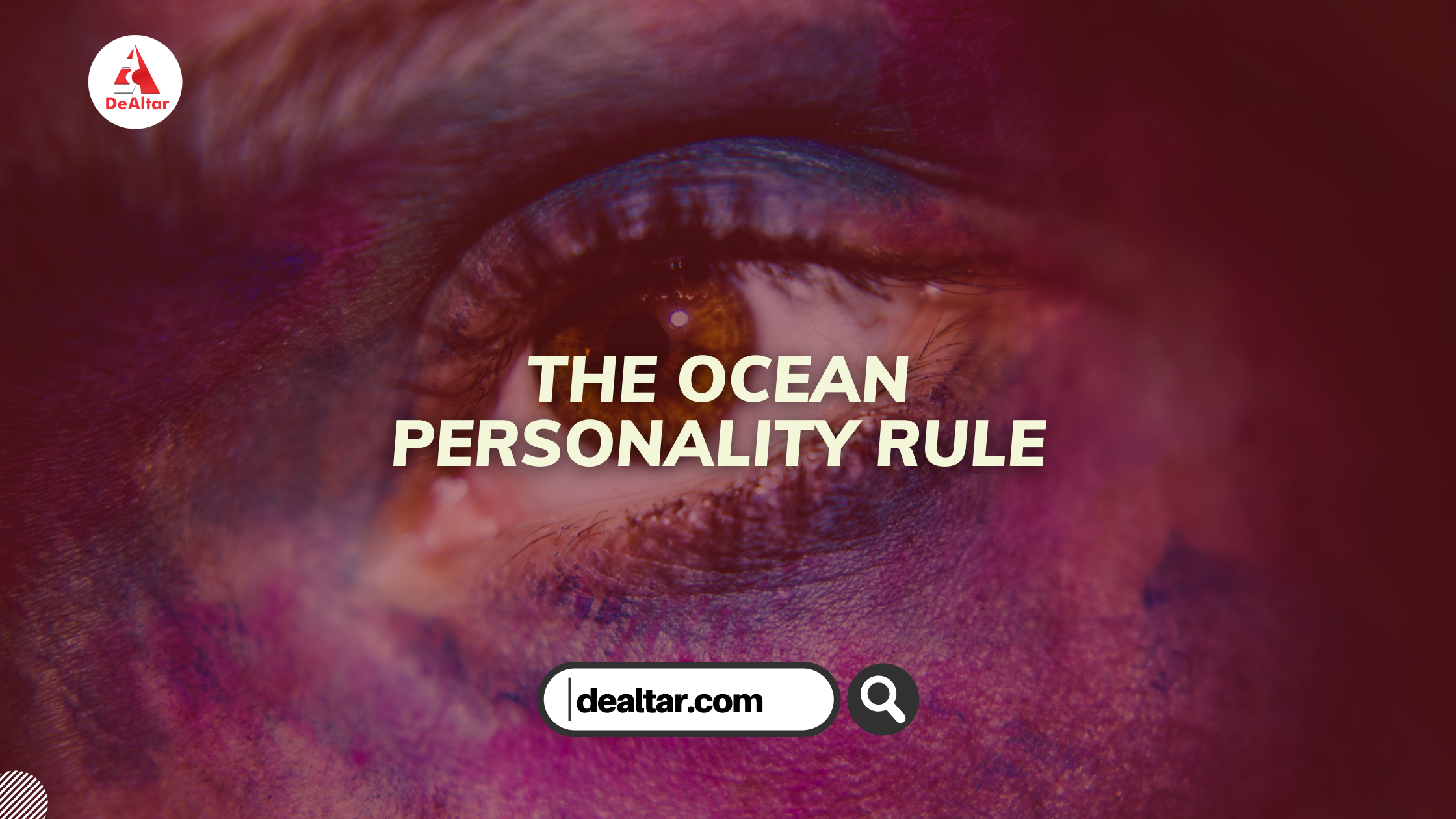The Ocean Personality Rule
The OCEAN or Five Factors personality rule, which is also known as Goldberg’s Five Factors of Personality, originated from decades of personality research, growing from the foundations of Cattell’s 16 factors and eventually becoming the most accepted model of personality to date.
These ocean factors are known as the Big Five because they encompass a large portion of personality-related terms. The five factors are not necessarily traits in and of themselves, but factors into which many related traits and characteristics fit into.
We will look at each factor in detail, with examples to understand what aspects of personality these factors cover. Positive Psychology helped explain these personality types in an easy-to-understand way.
1. Openness to Experience
Openness to experience has been described as intellect or imagination. This ocean personality type concerns people’s willingness to try new things, their ability to be vulnerable, and their capability to think outside the box.
Common traits of this personality type include; Imagination, insightfulness, varied interests, originality daringness, preference for variety, cleverness, creativity, curiosity perceptiveness, intellect and complexity/depth
An individual who is high in openness to experience is most likely someone who has a love of learning, enjoys arts, engages in a creative career or hobby, and enjoys meeting new people.
While an individual who is low in openness to experience probably prefers routine over variety sticks to what he or she knows and prefers less abstract arts and entertainment.
2. Conscientiousness
Conscientiousness is an ocean trait that can be described as the tendency to control impulses and act in socially acceptable ways. Conscientious people excel in their ability to delay gratification, work within the rules, and plan and organize effectively.
This ocean personality type is known for traits such as; Persistence, ambition, thoroughness, self-discipline, consistency, predictability, control, reliability, resourcefulness, hard work, energy, perseverance and planning.
People high in conscientiousness are likely to be successful in school and in their careers, to excel in leadership positions, and to doggedly pursue their goals with determination and forethought.
People low in conscientiousness are much more likely to procrastinate, be flighty, impetuous, and impulsive.
3. Extroversion
Extroversion personality has the direct opposite of introversion. It is concerned with where an individual draws their energy from and how they interact with others. In general, extroverts draw energy from or recharge by interacting with others, while introverts get tired from interacting with others and replenish their energy with solitude.
Common traits for this ocean personality type include; Sociableness, assertiveness, merriness, outgoing nature, energy, talkativeness, ability to be articulate, fun-loving nature, tendency for affection, friendliness and social confidence.
People high in extroversion tend to seek out opportunities for social interaction, where they are often the “life of the party.” They are comfortable with others, are gregarious, and are prone to action rather than contemplation.
People low in extroversion are more likely to be people “of few words who are quiet, introspective, reserved, and thoughtful.
4. Agreeableness
This ocean type concerns how well people get along with others. While extroversion concerns sources of energy and the pursuit of interactions with others, agreeableness concerns one’s orientation to others. It is a construct that rests on how an individual generally interacts with others.
This ocean personality is best known for traits such as; Altruism, trust, modesty, humbleness, patience, moderation, tact, politeness, kindness, loyalty, unselfishness, helpfulness, sensitivity, amiability, cheerfulness and consideration
People high in agreeableness tend to be well-liked, respected, and sensitive to the needs of others. They likely have very few enemies, as they are affectionate to their friends and loved ones, as well as sympathetic to the plights of strangers.
People on the low end of the agreeableness personality, are less likely to be trusted and liked by others. They tend to be callous, blunt, rude, ill-tempered, antagonistic, and sarcastic. Although not all people who are low in agreeableness are cruel or abrasive, they are not likely to leave others with a warm fuzzy feeling.
5. Neuroticism
This ocean personality, known as the nervous big 5 personalities, is not a factor of meanness or incompetence, but one of confidence and being comfortable in one’s own skin. It encompasses one’s emotional stability and general temper.
Their common traits include; Awkwardness, pessimism, moodiness, jealousy, testiness, fear, nervousness, anxiety, timidness, wariness, self-criticism, lack of confidence, insecurity, instability and oversensitivity.
Those high in neuroticism are generally prone to anxiety, sadness, worry, and low self-esteem. They may be temperamental or easily angered. They also tend to be self-conscious and unsure of themselves.
Individuals who are on the low end of neuroticism are more likely to feel confident, sure of themselves, and adventurous. They may also be brave and unencumbered by worry or self-doubt.
Now that you know what ocean category you belong to, you have a better understanding of why you and your friends/family act in certain patterns and make certain decisions. Asides from the big five, knowing the difference between temperament and personality also help in determining our understanding of people.
For a better understanding of the ocean personality rule, positive psychology has amazing resources to help answer questions you might have.

Comments (0)